The Economics and Statistics Division maintains archives of previous publications for accountability purposes, but makes no updates to keep these documents current with the latest data revisions from Statistics Canada. As a result, information in older documents may not be accurate. Please exercise caution when referring to older documents. For the latest information and historical data, please contact the individual listed to the right.
<--- Return to Archive
For additional information relating to this article, please contact:
June 05, 2023RESIDENTIAL COSTRUCTION - URBAN AND RURAL, 2021 Statistics Canada has released new data about building permits and residential construction in urban and rural areas. The information is available up from 2018 to 2021. The data below refers to the value of residential construction investments. In these tables, "urban" refers to Halifax regional municipality, East Hants, Cape Breton regional municipality, Kentville, Truro, Colchester County Subdivision C, New Glasgow, Stellarton, Trenton and Westville. All other areas constitute "rural" Nova Scotia.
Nova Scotia's residential construction investments rose from a total of $2.5 billion in 2018 to $3.8 billion in 2021. The fastest growth was from 2020 to 2021, when total residential construction increased by 28.3%.
Urban residential construction accounted for $2.34 billion in 2021 while rural areas accounted for $1.46 billion. Growth in rural residential construction was faster in 2021 (51.4%) than for urban residential construction (17.1%).
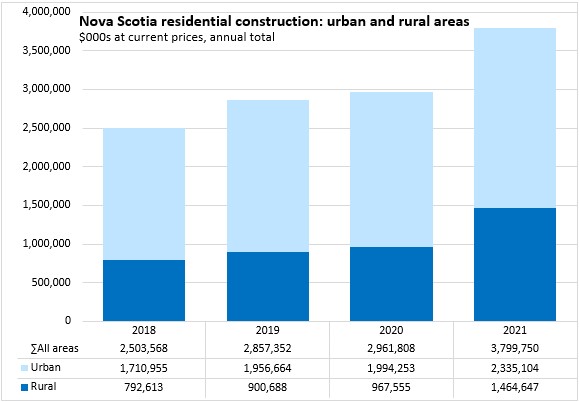
Alterations and improvements accounted for the bulk of residential construction investment in Nova Scotia, totally $2.07 billion in 2021 while new construction accounted for $1.60 billion.
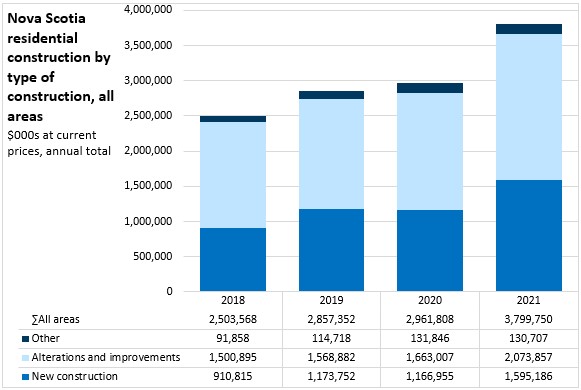
In rural areas, residential construction was substantially more weighted to alterations and improvements (63.8% of residential construction) than in urban areas (48.8% of residential construction). New construction accounted for 31.8% of rural construction and 48.4% of urban construction.
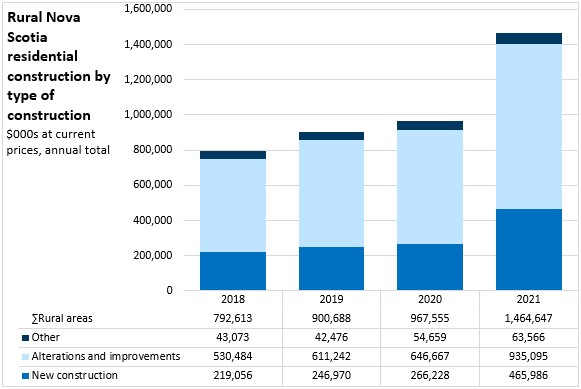
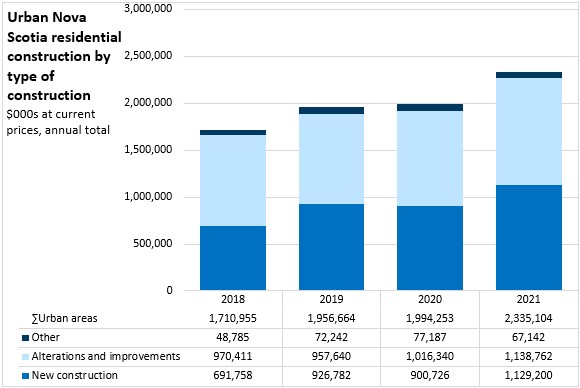
Single dwelling units were the largest type of residential construction investment across Nova Scotia, accounting for investments of $2.51 billion in 2021. Apartments were the next largest type of investment at $0.97 billion.

In rural Nova Scotia, single dwelling unit projects were the overwhelming majority of residential construction, accounting for $1.14 billion or 77.6% of investments in 2021. Apartments in rural areas accounted for just $0.13 billion (9.0%) of residential construction in 2021.
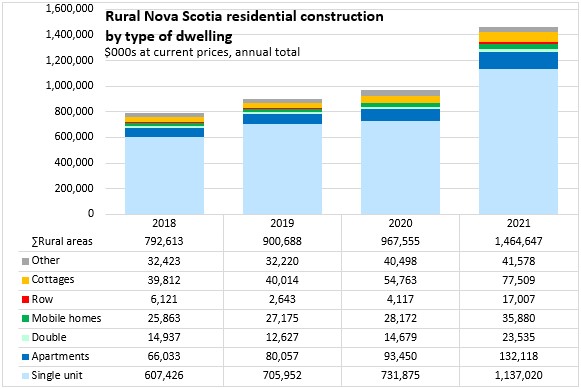
In urban areas, single dwellings were the largest type of residential construction at $1.38 billion (58.9% of urban construction). Apartments made up 35.7% of urban residential construction at $0.83 billion in 2021.
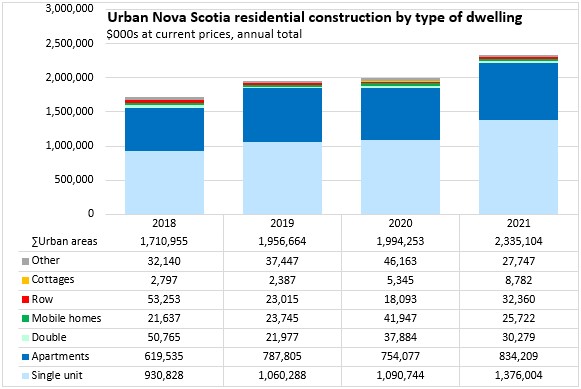
Across the province, Halifax's residential construction investment was considerably larger than in any other municipality or census subdivision. Lunenburn municipal district, East Hants, Colchester Subdivision C, Inverness Subdivision C and the Cape Breton regional municipality reported the next largest residential construction investments in 2021.

Note: data were suppressed for residential construction investments in: Parrsboro, Oxford, Cumberland County Subdivision A, Windsor, Mahone Bay, Middleton, Shelburne (town) and Shelburne municipal district.
Source: Statistics Canada. Table 46-10-0076-01 Rural Canada Housing Profiles, values of investments in residential building construction, by type of residential building and type of work (x 1,000)
<--- Return to Archive